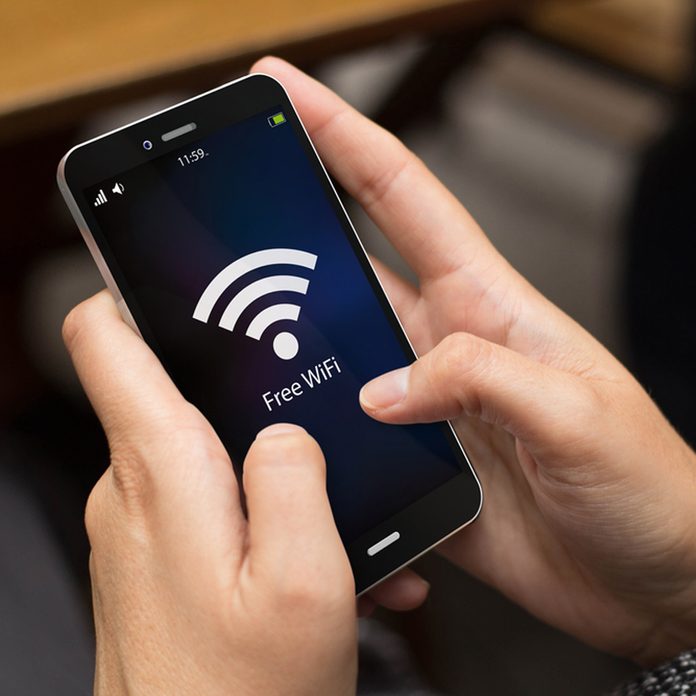
Women Inventors Make Their Mark
Imagine your home with no refrigerator, central heating, security system or WiFi. Without the resourceful women inventors who created these and other groundbreaking innovations over the past century, our home lives would be almost unrecognizable today.
Not only did these early innovators enhance the comfort, safety and efficiency of American homes, they often did so in a culture that was dismissive of their achievements. Many women inventors had to co-author patents with their husbands or other male colleagues. Others had their names omitted from patents entirely, and only recently were recognized for their contributions.
To mark Women’s History Month (March) and International Women’s Day (March 8), we are highlighting ten inspiring women thinkers and scientists, and the brilliant inventions they brought into our homes.

Dishwasher: Josephine Cochrane
Each time you relax on the couch while your dishwasher takes care of dinner’s dirty work, thank Josephine Cochrane. Bored by the chore of hand-washing dishes — and annoyed that her fine china would often chip when scrubbed in the sink — this Chicago socialite came up with a mechanical solution in the shed behind her home.
She patented her design, which incorporated water jets and a dish rack, in 1886. Soon after she founded Cochran’s Crescent Washing Machine Company, which eventually became part of KitchenAid. Cochrane was finally inducted into the National Inventors Hall of Fame in 2006, almost a century after her death.

Ironing Board: Sarah Boone
Born into slavery in North Carolina in 1832, Sarah Boone escaped to Connecticut with her husband and children in the mid-1800s via an Underground Railroad-like network. A dressmaker, she developed a new, improved version of the ironing board, previously a simple wooden plank set across two chair backs.
Boone’s featured a narrower, curved surface that was padded and collapsible for easy storage. She was awarded a patent for her ironing board in 1892, making her one of the first African-American women to receive one. More than 100 years later, her design is still the prototype for the ironing boards we use today.

Scotchgard: Patsy O’Connell Sherman
A lifelong advocate for women in science, Patsy O’Connell Sherman ignored her high school aptitude test, which recommended she become a housewife. Instead, O’Connell earned degrees in chemistry and math before going to work for 3M in 1952.
While at 3M, a sample of fluorochemical rubber she was developing accidentally spilled on a coworker’s shoe. After trying to remove it, Sherman realized the material could instead be used to repel water and stains from fabric. That’s how Scotchgard was born. She and colleague Samuel Smith were awarded the patent in 1971, one of 13 the pair hold together.

Toilet Tissue Holder: Mary Beatrice Davidson Kenner
Holder of five patents, more than any other African-American woman to date, Mary Beatrice Davidson Kenner came from a family of inventors, including her grandfather, father and sisters. She shared the 1982 patent for her innovative toilet tissue holder with her sister, Mildred Davidson.
Their design threads the free end of the roll through a mechanism to hold it apart from the remainder of the roll, making the tissue easier to grasp with one hand. Kenner’s other notable patented inventions include a wheelchair tray attachment and a mounted back washer and massager.

Circular Saw: Sarah Tabitha Babbitt
Part of the Massachusetts Shaker community, Sarah Tabitha Babbitt is said to have invented the first circular saw in 1813. Babbitt did not patent her design, a practice forbidden by her religion.
According to Shaker lore, however, she proposed creating a round saw blade attached to a water-powered machine after noticing the inefficiency of the traditional two-man whipsaw used at a local saw mill. She is said to have made her first prototype circular saw in Albany, N.Y. The basic design is still used by DIY enthusiasts and industrial lumber mills today.

Foot Pedal Trash Can: Lillian Gilbreth
As the mother of 12 children, Lillian Gilbreth was unsurprisingly interested in improving daily household objects with ergonomic tweaks. One of her most enduring upgrades was the foot pedal trash can, which allowed users to pop open the lid even with their hands full. In the mid-20th century, Gilbreth also introduced refrigerator door shelving, wall light switches and an improved can opener.
Among the first female engineers to earn a doctorate, Gilbreth is best known for her groundbreaking studies that applied psychology to enhance efficiency in the workplace and home. If you love the “work triangle” design of your kitchen, you can thank this formidable innovator.

Modern Electric Refrigerator: Florence Parpart
If you’ve ever heard an older person call their fridge an “icebox,” here’s the history: In the 1800s, perishable food was often stored in an insulated cabinet, cooled by a large block of ice that needed to be replenished every few days.
That all changed with Florence Parpart’s 1914 patent for the first modern electric refrigerator, revolutionizing how families conserved food and kicking off a wave of domestic refrigerator models. By the mid-20th century, electric refrigerators were considered a standard kitchen appliance.

Home Security System: Marie Van Brittan Brown
Frustrated at the slow police response in her African-American neighborhood in Queens, N.Y., nurse Marie Van Brittan Brown created the prototype of the modern home security system.
Van Brittan Brown wired a motorized camera recording her home’s entrance to a TV monitor, pioneering the first closed-circuit TV system, and included a two-way microphone to communicate with visitors through the securely closed door. Her system also introduced the panic button to notify law enforcement in case of an emergency or break-in. She was awarded the patent for her invention in 1969.

Gas Central Heating: Alice H. Parker
Feeling toasty with your home’s efficient forced-air central heating? Until Alice H. Parker came up with the idea of a natural gas-powered furnace to deliver warm air through ducts to individual rooms of your home, you would have had to chop wood or shovel coal to enjoy that comfy warmth.
This African-American inventor was awarded the patent for her natural gas furnace and central heating system in 1919. It was an important step away from polluting, labor-intensive wood or coal furnaces and towards the cleaner, safer heating systems we use today.

Wireless Transmission Technology: Hedy Lamarr
How many of the inventions listed above do you control remotely via your phone? From smart refrigerators to wireless heating and home security systems, many of our most important domestic technologies depend on WiFi. None of it would be possible without the work of Hollywood actress and inventor Hedy Lamarr.
Besides starring in dozens of iconic Golden Age films, Lamarr developed the frequency-hopping technology in 1941 that became a precursor to today’s WiFi, GPS and Bluetooth. Originally created for U.S. Navy torpedo guidance systems during World War II, the technology became one of the building blocks of modern wireless communication. Lamarr was inducted posthumously into the National Inventors Hall of Fame in 2014.
